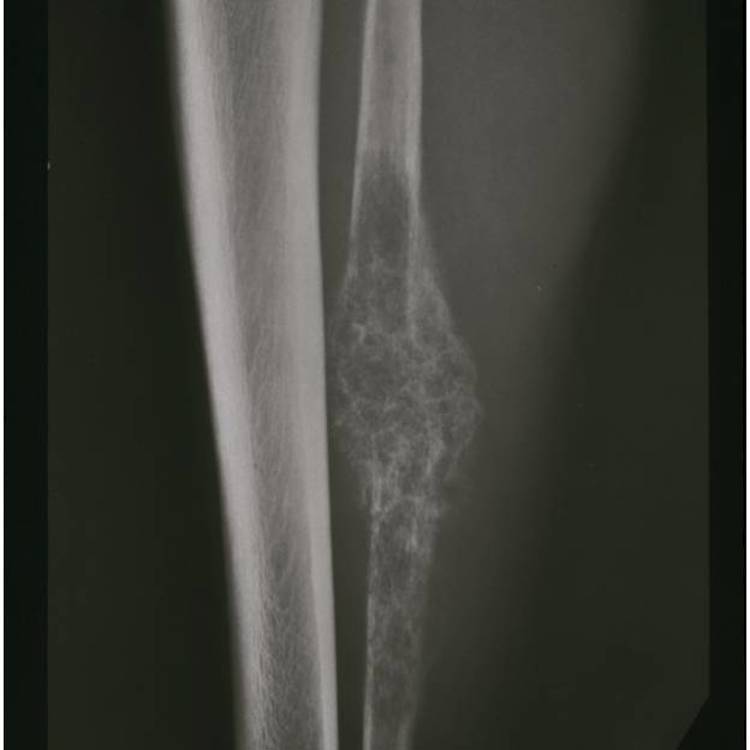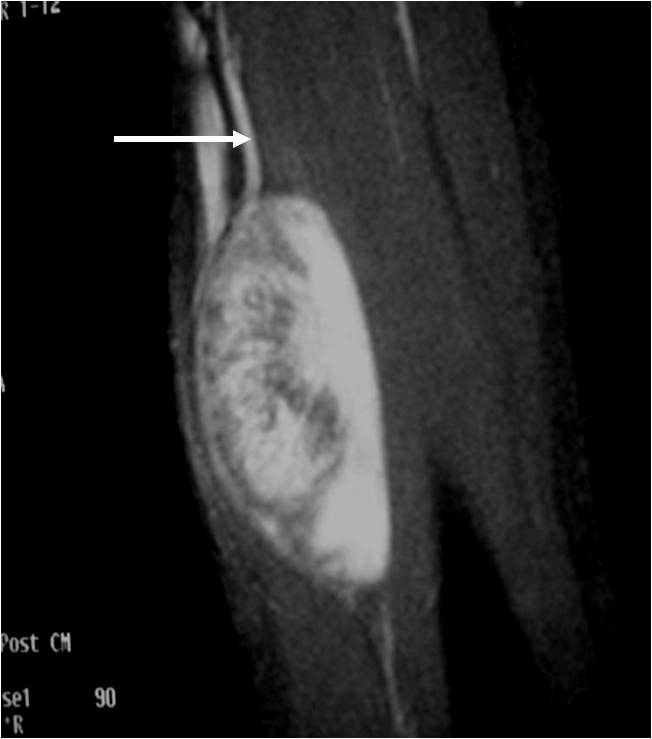What is a Mesenchymal Chondrosarcoma?
This is a rare cancerous tumor (sarcoma) that can spread (metastasize). It is a particularly rare type of chondrosarcoma. Approximately ⅔ of cases occur in the bone and ⅓ in the soft tissues. Can metastasize to lungs, liver, lymph nodes and other bones.
Signs and Symptoms
- • Signs and symptoms include pain and swelling.
- • ⅓ of patients are symptomatic for more than one year.
Causes
- • Can be due to the same chromosomal translocation as a Ewing’s sarcoma which is a small round blue cell cancer. (t11;22 or EWS/FLI 1)
Who is usually affected?
- • Typically affects adolescents and young adults.
- • Seen equally in both males and females.
- • Predominantly affects those ages 10 to 40 years.
- • The peak age is in the third decade of life.
- • Very rare.
Common Bones Involved
- • Lower extremity
- • Femur
- • Ribs
- • Jaw
- • Pelvis
- • Can metastasize to lungs, liver, lymph nodes and other bones.
Biological Behavior
- • Are malignant (cancerous) cartilage tumors that destroy bone, adjacent joints and spread into the surrounding muscles.
- • It consists of cartilage tissue mixed with small round blue cells similar to a Ewing sarcoma.
- • Rare and deadly form of chondrosarcoma.
- • The five year survival rate is 55-65% and the ten year survival rate is 27%.
Diagnosis
- • The work-up often consists of a physical examination, X-rays, CT scans, MRI, and sometimes bone scans are required. CT scans can be used to check for subtle mineralization that may help with the diagnosis
- • CT of the chest is necessary to check for pulmonary metastases. The lungs and other bones are the to most common sites for the tumor to spread.
- • The diagnosis is often confirmed with a biopsy, which means taking a sample of tumor and having it analyzed under a microscope by a pathologist.
Risk to your limbs
Mesenchymal Chondrosarcomas are cancerous aggressive tumors that, if left unchecked, will grow and destroy your normal bone. As the tumor slowly grows, the bone is weakened and you are at an increased risk of breaking the bone due to the tumor (called a pathological fracture). They may also spread to your lungs or other bones.
Radiographic imaging is used to help form a diagnosis. These include X-Ray, MRI, CT and Bone Scans.
An example of an Mesenchymal Chondrosarcoma MRI is shown.

Treatment of Mesenchymal Chondrosarcoma
Due to its rarity, there are no guidelines for its optimal treatment. Treatment should be aggressive and individualized. Treatment usually involves surgical removal and chemotherapy. Most patients are treated with a combination of surgery and chemotherapy. There are two kinds: round cell variation and hemangiopericytoma-like variation. Treatment for round cell variation includes a combination of chemotherapy, radiation and wide surgical resection. And for hemangiopericytoma-like variation includes chemotherapy and wide surgical resection only without radiation.
Surgery

Most common treatment is wide radical limb sparing surgery. Surgical treatment includes wide or radical resections to remove the complete tumor and additional margins. The removal of additional, surrounding margins ensures that the tumor is completely removed and decreases the chances of the tumor coming back.
Chemotherapy

Chemotherapy is a systemic treatment option for some cancers, meaning the chemotherapy drugs travel throughout the body and can kill the cancerous cells that have metastasized, or spread throughout. Chemotherapy is used to treat cancer, control/prevent cancer from spreading, and ease the symptoms related to the cancer. There are various drugs used in chemotherapy, so the combinations of drugs administered and the number of cycles may differ between each person and tumor. Lastly, chemotherapy may be used in conjunction with other treatments, specifically local treatments such as surgery.
Radiation

Radiation is a treatment option for some cancers. Radiation therapy is a localized treatment that utilizes high-energy particles or waves to kill cancerous cells. Because radiation therapy is a localized treatment, it only affects the area in which it is set to target and therefore eliminates the risks of damaging healthy cells throughout the body. Not only is it used to treat cancer, but it can also decrease the chances of the cancer from recurring. Lastly, radiation may be used in conjunction with other treatments, such as surgery or chemotherapy, to treat cancers.






